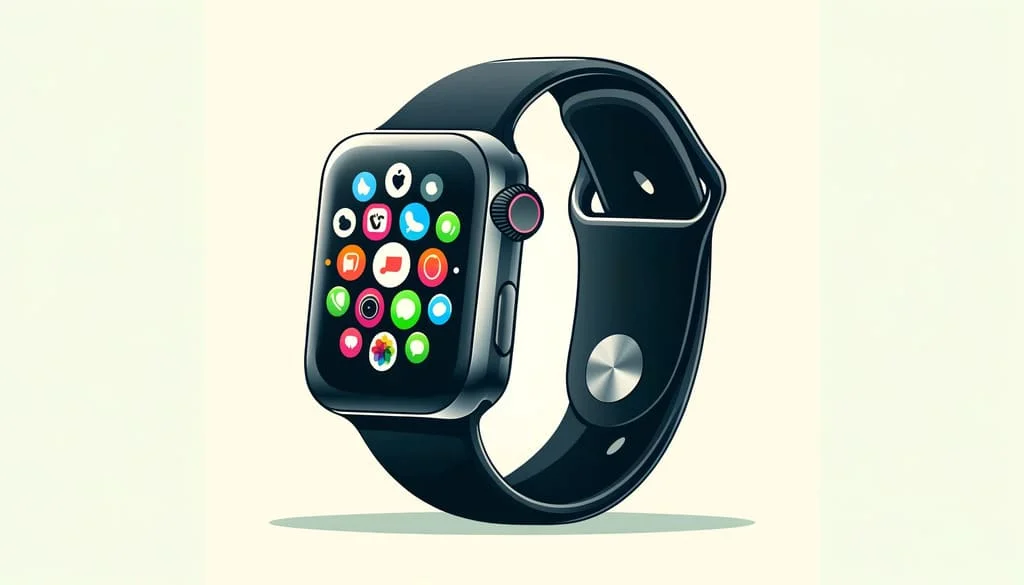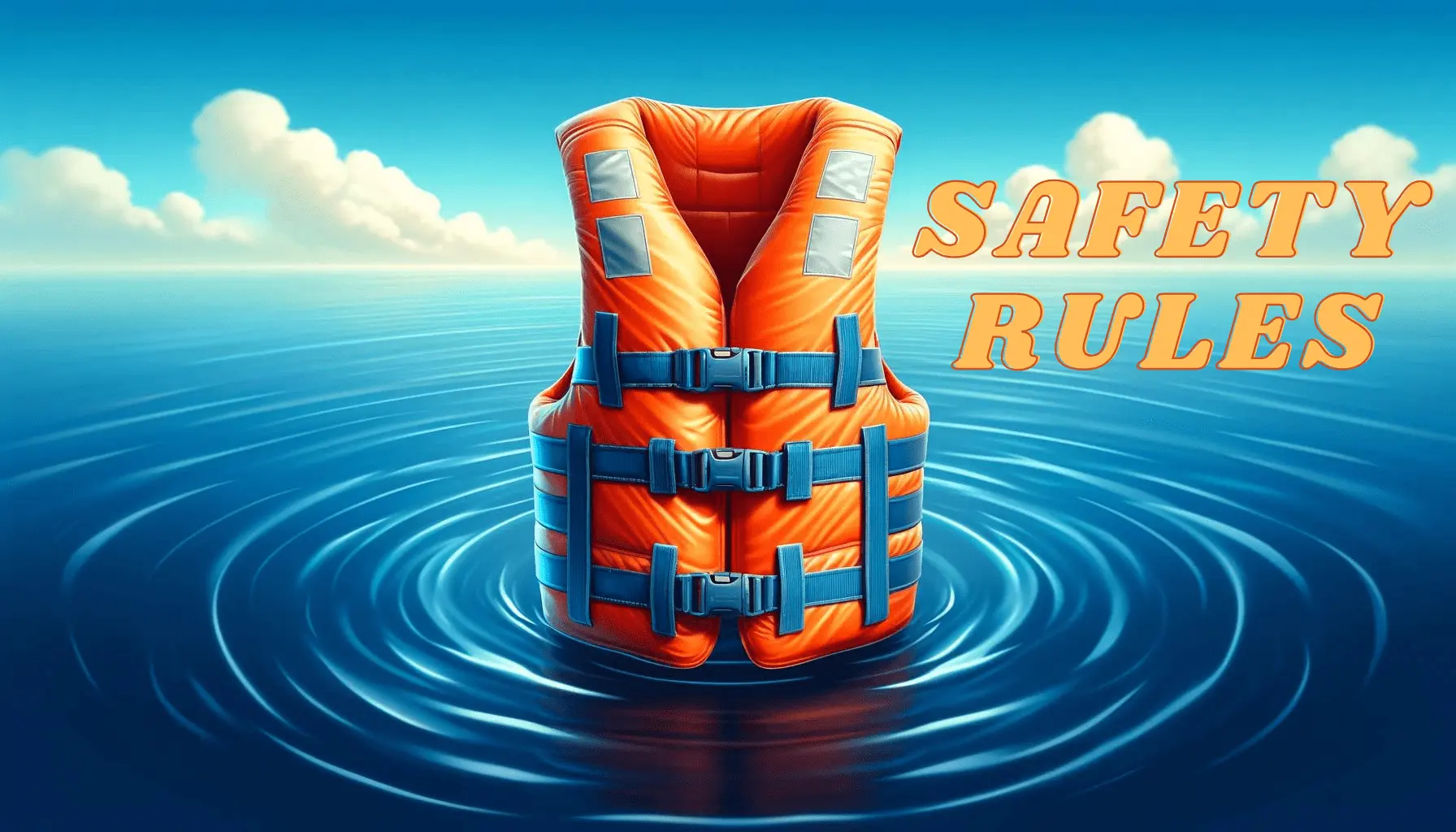Kayaking is an adventurous water sport that involves paddling a small boat, called a kayak, through water bodies like rivers, lakes, and oceans.
This exciting activity is a great way to explore the beauty of nature and enjoy the serenity of water while also providing a good workout.
Whether you are a beginner or an experienced paddler, kayaking is a fantastic way to spend time outdoors and experience the thrill of navigating through the water.
Today, there are all types of kayaks and kayaking, ranging from recreational paddling to whitewater paddling, fishing, and touring.
The difference between kayaking and canoeing is that the kayak is typically lower to the water, and the paddler(s) sit facing the direction the boat is going.
In this article, we will take a closer look at what kayaking is, its history, types of kayaks, and some tips for beginners to get started.
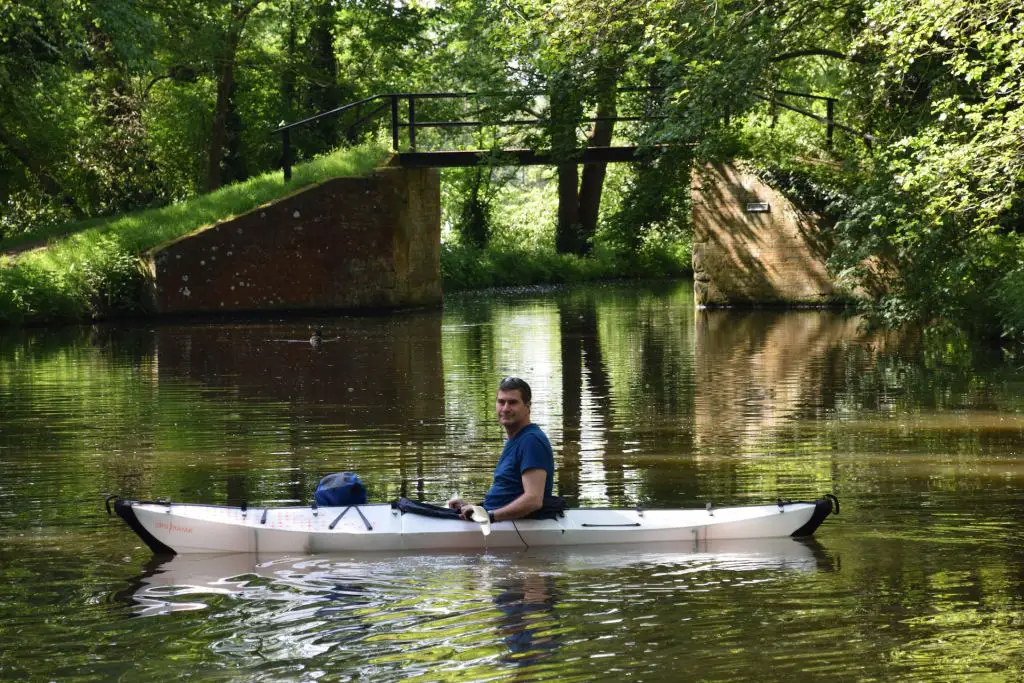
The History Of Kayaking
There’s always something new to discover and explore on the water, whether you’re a seasoned kayaker or a newbie. But where did kayaking start? We will now find out the magical origin of the kayak.
Kayaking has a long and fascinating history. It evolved from a survival skill and became a recreational activity as well as a competitive sport. It is believed that kayak use has been around for 4000-5000 years.
The oldest kayak, however, dates from 1577 and is located in the State Museum of Ethnology in Munich, Germany.
The indigenous people Ainu, Aleut, Inuit, and Yupik were the first to use kayaks for hunting in the subarctic regions across Siberia, Greenland, the Canadian Northwest Territories, and Alaska.
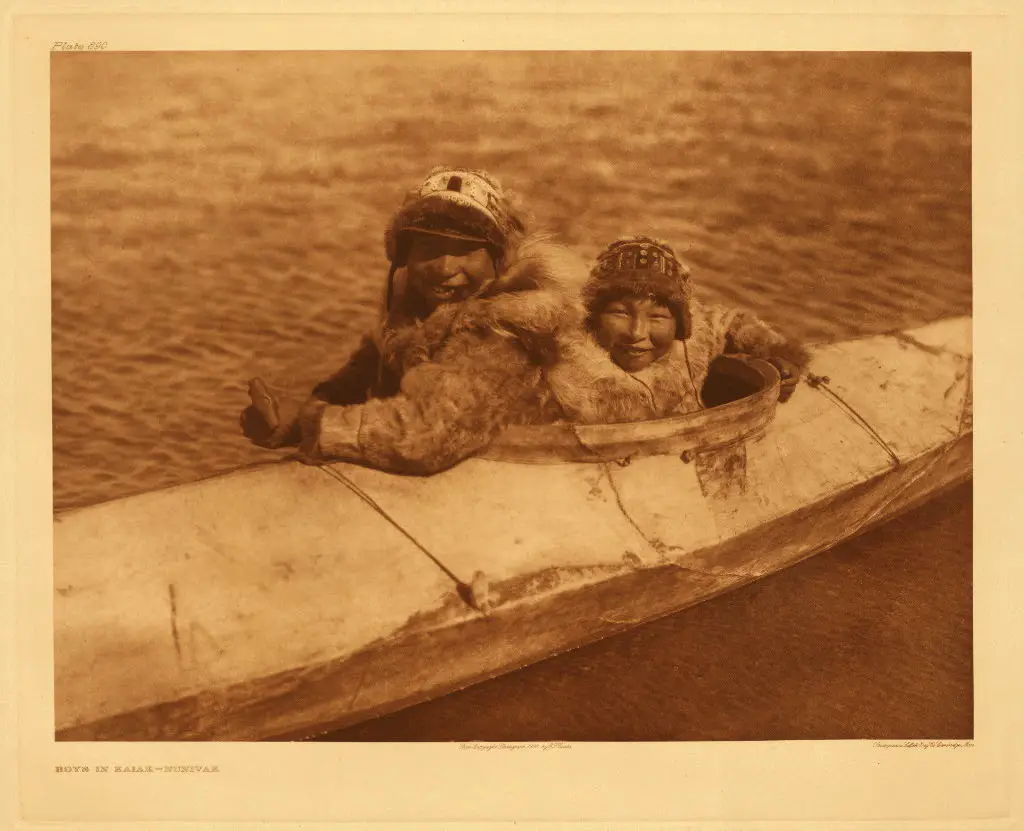
As mentioned earlier, the subarctic people used kayaks for fishing, hunting, and transportation. Eventually, these people would go on sea expeditions to explore new lands along the coastlines of North America, Northern Europe, and Eurasia.
The people of the subarctic region had two main types of kayaks. The first was constructed from driftwood. The second was built using whalebones.
Both varieties had animal skin and whale fat coatings applied to make them waterproof. To increase the boat’s buoyancy, air was frequently pumped into bladders made of sealskin.
The indigenous people of the subarctic region also had various designs of kayaks with different lengths.
For example, long and large open-skin vessels about sixty feet or more, called umiaks, could carry entire families as well as their possessions.
Also, the ancient Subarctic people had boats that were small and agile, similar to today’s recreational kayaks. Hunters used these kayaks to sneak up on animals in the water.
We don’t know exactly where the Europeans learned how to use kayaks, but by the middle of the 1800s, they were using soft-sided kayaks for skimming through chilly waters.
The tribes of the subarctic regions continued to use kayaks for exploring, while the Germans and French began using the boats for recreation.
The kayak started to be mass-produced for recreational use as Europeans and Subarctic peoples exchanged cultural ideas.
At first, they were collapsible, made with wooden frames and a waterproof rubber skin to wrap around them.n
By the 1950s, kayaks were manufactured of fiberglass. Kayakers had gradually produced a more lighter and more durable boat.
Over several decades, kayaking has grown in popularity as a competitive sport, with competitions held all over the world. Kayak racing was added as an event to the 1936 Berlin Olympic Games.
Lightweight and durable plastics were first utilized to create kayaks in the 1970s, and they are still used to create modern kayaks today.
White-water kayaking may have originated in Germany but became extremely popular in America, such that there are numerous competitions for it as well as the Olympics.
In recent times, inflatable kayaks made from rubber or flexible PVC have become popular as well.
Kayaks now come in numerous sizes for various uses. This is thanks to advances in market segmentation in the manufacturing industry as well as the discovery of newer activities.
We will cover the various types of kayaks and their uses in the next section.
Types Of Kayaking
There are various types of kayaks for different kayaking needs. The characteristics of a body of water that a paddler wishes to explore influence their choice of kayak.
Typically, the main types of kayaking are recreational, sport, sea, white-water, touring, fishing, and expedition kayaking.
Recreational Kayaking
Most of the kayaks that you will encounter will be recreational kayaks. With their wider footprint, they are relatively more stable in the water. Because of this, they don’t flip easily, which makes them great for beginners.
Recreational kayaking mostly involves serene trips in nature, paddling protected lakes and rivers. The main aim is to have fun while being comfortable.
Touring Kayaking
When you need to go on a longer trip that could last a day or more, you’ll need a touring kayak.
It takes place in calmer sections of waters such as lakes and oceans.
Touring kayaks are best for longer trips because of their design, which is slimmer and longer than recreational kayaks.
There are different types of tours one can take. Most are day tours. There are multi-day excursions as well, although this kind of paddling is now considered to as expedition kayaking.
Only skilled swimmers and experienced paddlers are recommended to attempt kayak tours because the long journeys require a lot of endurance from the paddlers.
Whitewater Kayaking
Whitewater kayaking is an adrenaline-packed action sport and a recreational activity. It involves paddling in rapid waters.
Whitewater happens in streams or rivers with multiple elevation changes. These elevation changes cause the water to move rapidly, which in turn produces frothy water that appears white.
The American Whitewater Association developed a scale to assess the difficulty of a river. There are six categories used, from class I (one) to class VI (six).
Whitewater kayaking is both thrilling and dangerous. While rivers don’t have a consistent grade throughout, paddlers must be extremely adept to navigate all streams with rapids.
Whitewater kayaking also has subsets of the sport, such as playboating, river running, etc.
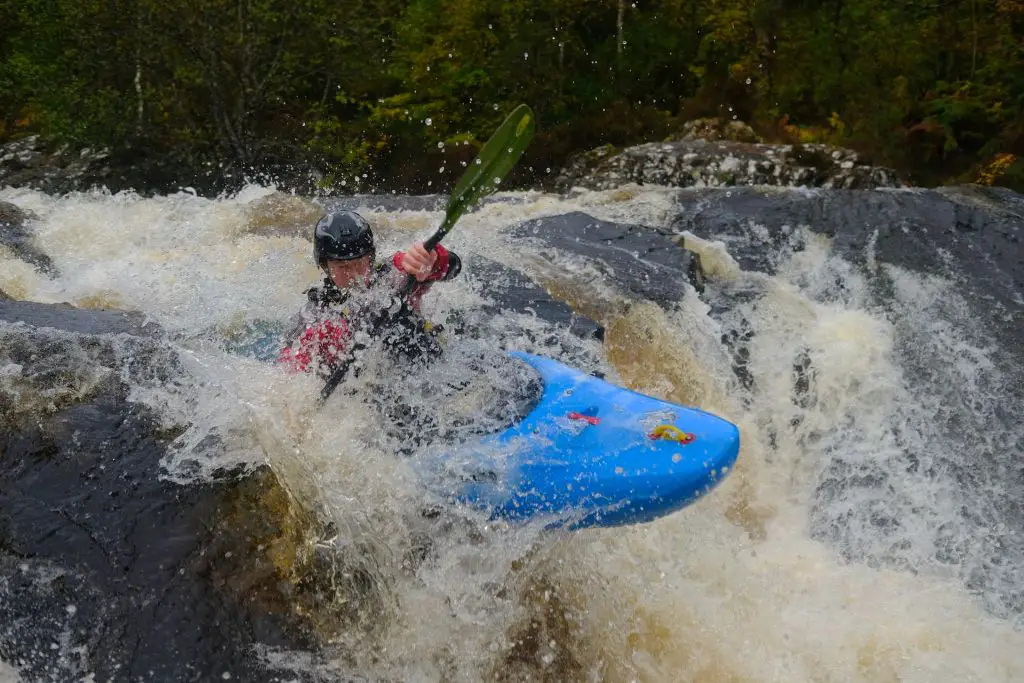
Sea Kayaking
Sea kayaking is best for people who know a lot about kayaking and the terrain, have a ton of experience with sea navigation logistics, and can deploy safety measures.
As the name “sea” implies, you will be paddling in the ocean or on the seas. As a result, sea kayaks need adequate storage to last for long journeys with camping.
Sea kayakers seek adventure, which is why they explore wilderness areas with unpredictable waters. They are also the most advanced paddlers around.
Fishing Kayaking
Kayak fishing maintains the same fundamentals as other types of boating for anglers. You need a stable vessel to cast lines, storage for accessories, and holders for your fishing rods.
One can imagine that in the early days of kayaking thousands of years ago, fishing would have been done in boats similar to typical recreational kayaks, but today kayak fishing is done for fun or sport.
Most kayak anglers fish in lakes and on rivers, but with the use of a fishing license. This is different from the type of fishing that the ancestral indigenous people would have done.
In certain protected territories, these indigenous people still fish in ways similar to those of their ancestors.
Expedition Kayaking
Expedition kayaking is more than just kayaking. It is essentially sea and tour kayaking combined with camping.
As such, it is definitely the most advanced form of kayaking because expeditions can take multiple days of being on the water and camping on the shore.
There are a number of magical places to kayak around the globe that will more than satisfy the feeling for adventure.
Many sea kayakers have adventures scheduled all around the world that are on their bucket lists.
Surf Kayaking
Surf kayaking takes place in the ocean but uses kayaks similarly shaped to white-water boats. It is just like surfing, but instead of using a surfboard, the paddler sits in a kayak.
Only experienced kayakers with a background in extreme sports should engage in surf kayaking.
Although surf kayaks are similar to whitewater models, the major difference is that they have a rocker only on the bow side, and the stern is flat, resembling a surfboard. Also, most surf kayaks have fins that act similarly to a skeg.
Gear And Equipment
A complete list of all the kayaking equipment is provided below, as well as descriptions of what it does and when you might need it. It is not a definite list because it would depend on the kind of adventure you have planned.
It is wise to make a checklist when planning and packing for your adventure.
Kayak Types And Features
There are various types of kayaking, and there are designs for each type, respectively. However, there are two major categories that all kayaks fall into. They are sit-in and sit-on-top kayaks.
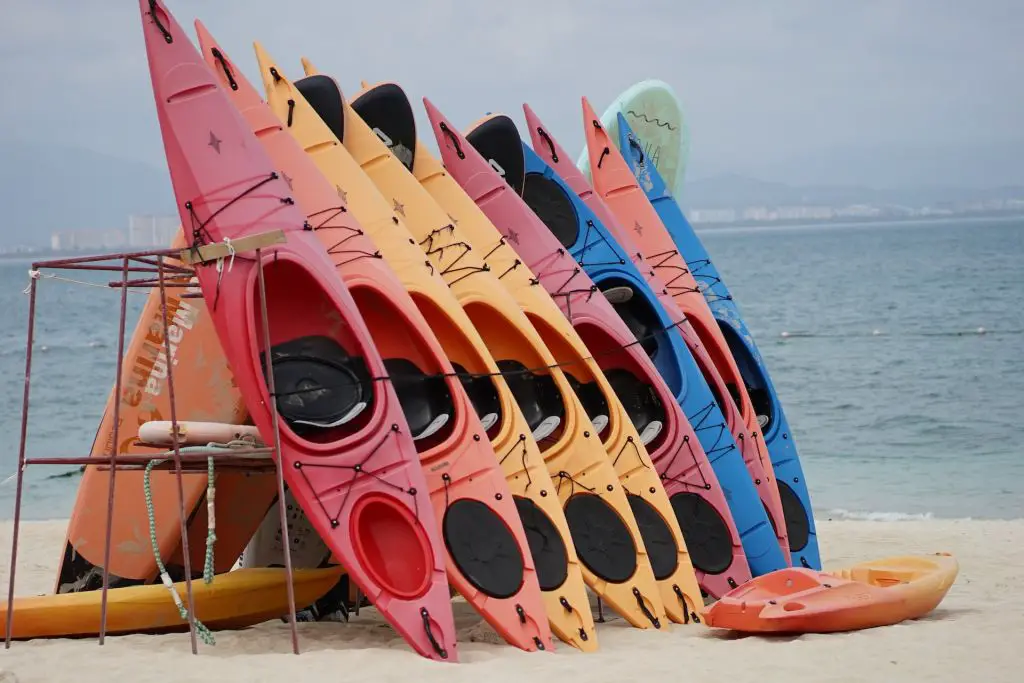
Sit Inside
Like the name suggests, this is a kayak that encloses you in a cockpit, specifically your legs. They are to keep water out and keep your legs dry, which is useful in cold weather or climates.
Sit-On-Top
Kayaks have an open design where the paddler sits higher in the boat. Also, they are particularly useful for boating trips where the paddler needs to have more mobility.
Kayaks can be built from any material, but regardless of the material used, they typically come in a hardshell or an inflatable material.
Recreational Kayaks
Versatile for simple recreational use, these kayaks are shorter and wider for stability and to be nimble in the water.
They are usually less than 12 feet long and come with a roomy cockpit for sit-in types. They also have sit-on-top models, too.
Touring Kayaks
Touring kayaks have a v-shaped hull from a cross-section view, they are between 12 and 24 feet long and made from lightweight but sturdy materials.
Due to their length, skegs or rudders are commonly fitted on them. Generally, they are similar to expedition and sea kayaks.
Fishing Kayaks
Although sit-in or sit-on-top boats can be used as fishing kayaks, sit-on-top boats are usually the most popular.
Made-for-fishing kayaks have a foot-controlled rudder, fishing rod holders, foot-paddles, and you can attach a trolling motor.
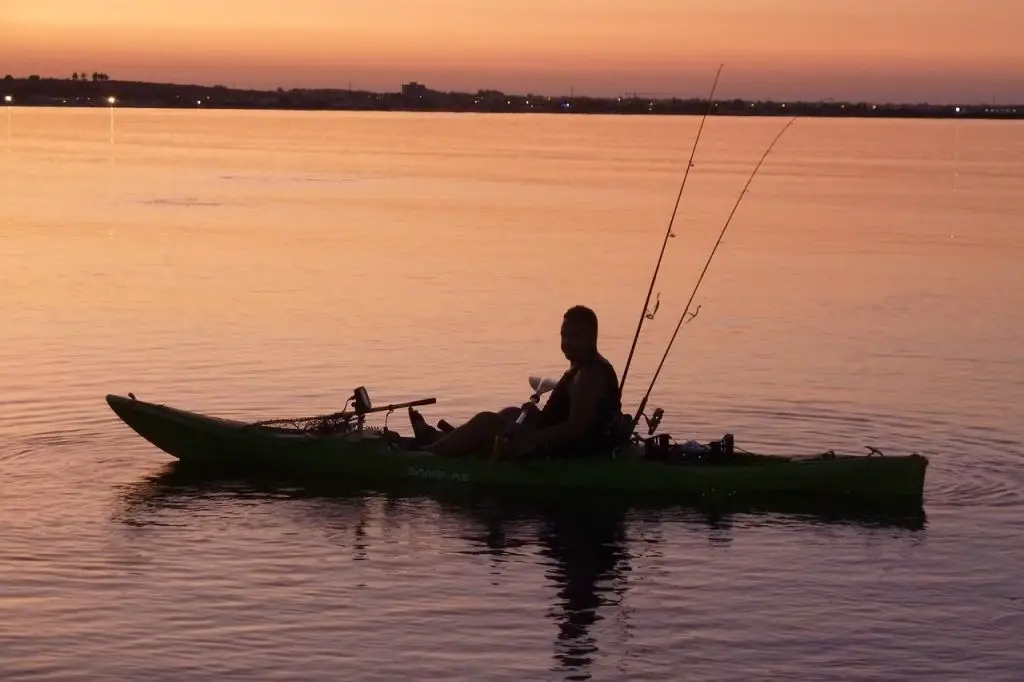
Sea Kayaks
Sea kayaks are from the same family as touring and expedition kayaks. In truth, they are somewhat interchangeable, with touring kayaks being at the low end of the spectrum.
They are only sit-in kayaks, as they are the narrowest of kayaks. Also, they have two bulkheads, one at the bow and one at the stern.
Expedition Kayaks
Expedition kayaks are designed to be used on multi-day journeys and are constructed of the most expensive, lightest, and most durable composite materials, including carbon fiber.
They have similar storage to sea and touring kayaks, so they can fulfill the complex nature of the trips.
Whitewater And Play Boating Kayaks
Whitewater kayaks are suitable for a variety of leisurely boating pursuits. They are some of the shortest kayaks available, being less than 10 feet long.
They need to be small and nimble to be stable, turn quickly, and be predictable. Only one person may operate them as sit-in kayaks due to their size.
Surf Kayaks
Surf kayaks have an unusual but specific design that is similar to the whitewater models. Their aim is to have buoyancy and speed when slicing through waves.
The major difference is that they have a rocker only on the bow side, and the stern is flat, resembling a surfboard.
Crossover Kayaks
Crossover kayaks are meant to be almost jacks of all trades. Usually, they sit in between a recreational kayak and a longer kayak.
A paddler with this boat can cross between day-touring, fun exploring, even fishing, and maybe whitewater kayaking with just one boat.
Inflatable Kayaks
Inflatable kayaks are plastic or rubber and nylon boats with a higher level of strength and durability in their construction. There are designs for calmer waters as well as wild whitewater.
Considering that they can be deflated, folded, and packed away in a backpack, they are more portable than hardshells.
These days, they come with either a foot or electric pump to aid in inflation as well as deflation. Despite their sturdy build quality, there are still steps you need to take to keep the kayak well protected.
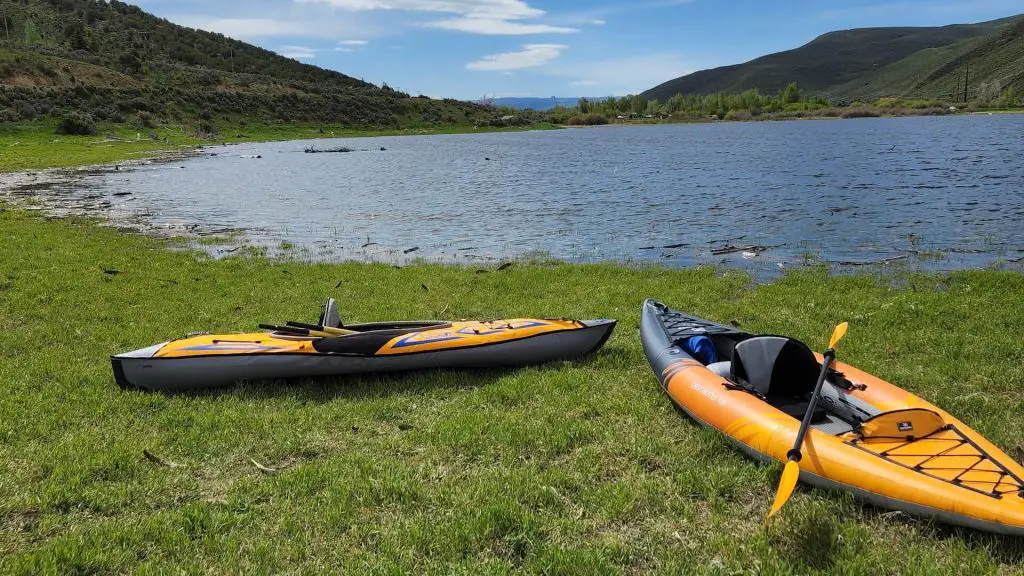
Tandem Kayaks
Tandem kayaks allow for two paddlers in the same boat. Two in a boat has advantages like instructing beginners and sharing intimate paddling experiences with loved ones.
Its disadvantages are the size and weight, as well as the dilemma of what to do when you need to go paddling solo. Also, tandem kayaks come in all types: there are sit-in, sit-on-top, inflatable, hardshell, and pedal kayaks.
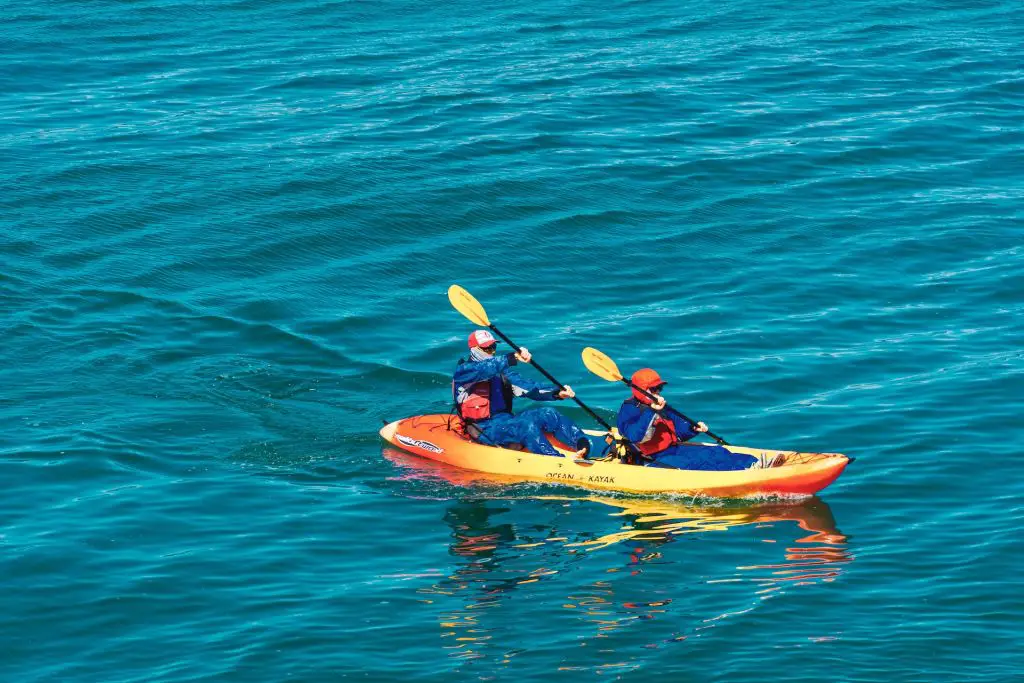
Pedal Kayaks
Pedal kayaks are popular for kayak fishing. They use pedals like a bicycle to propel the kayak, as well as a hand-operated rudder to steer the kayak.
Adventures with this type of kayak will still require a backup paddle. Also, pedal kayaks are sit-on-top to allow for space to pedal and other activities like storing fishing gear.
Paddle Types And Features
There are all types of kayak paddles for various kayaking adventures and configurations to help make kayaking as comfortable as possible.
It is difficult to cover all the types of paddles, but there are fundamentals that will help you find the right one for your type of adventure and comfort.
Kayak paddles have double-edged blades and must be paddled from side to side to propel the kayak. Comfort comes from the length and design of the shaft, which is the part you hold.
A paddle generates more or less grip based on the design of the blades, and individual paddlers will find comfort in a mix of materials that the shaft and blades are made with.
The shafts are the “stick” that the hands use to generate strokes and can be either straight or bent.
Types Of Kayak Paddles
Low-angle paddles are designed for efficiency and ease of use.
High-angle paddles are designed to move a lot of water quickly and have a catch-and-hold feature.
Bent-shaft paddles provide a more comfortable angle for hands to rest during power strokes, minimizing fatigue and joint wear and tear.
Single-piece paddles have less flex, making them safer to lose or break.
Two-piece paddles have less flex, and you can store them in a smaller area.
Four-piece paddles make inflatable kayaks easy to fit into small carry bags and SUVs.
Shafts can either be round or oval in cross-section, while the blades have four shapes and forms.
- Dihedral Paddle Shape. Dihedral blade kayak paddles reduce water flutter and allow the user to turn and control the kayak more efficiently, making them great for long-distance paddling and beginner paddling.
- Spoon Paddle Shape. This paddle blade has a large curve from end to end, making it forceful in the first half to a third of its action. Strokes with these blades grab water at the start phase but can reduce their efficiency if you follow through.
- Flat Paddle Shape. Flat-blades are the basic paddle shapes for paddles that are usually included when you buy a kayak.
- Wing Paddle Shape. Wing-shaped paddles are designed to move quickly and capture water, but they are only for competition paddlers because of the skill required to use them.
The most important details are the shaft and blades’ materials, such as wood, plastic, aluminum, and composite materials.
Beginners should start with plastic paddles as they are the cheapest.
However, the best fit for paddlers of any skill level is not necessarily the most expensive paddle, which is made from edge-to-edge.
The best blade for kayaking depends on a number of factors, such as the type of kayaking and the length of the kayak.
There are paddles with aluminum shafts and fiberglass blades, or wood blades with a carbon fiber shaft and a carbon fiber tip guarding the wood blade.
The most important details in choosing a paddle are its height, weight, and comfort.
Your own height determines how you will hold the paddle, and the paddle’s weight is the last determining factor.
A lighter paddle is needed for a long journey to reduce fatigue, so it is essential to try out a bunch until you find the most comfortable one.
Safety Equipment
The type of safety equipment you need greatly depends on the type of kayaking you do. However, there is basic safety equipment that is common to all kayaking and other water sports.
First-Aid Kits
Make sure to bring a basic first-aid kit. It’s one of those things that is just basic insurance.
Ensure that there are things like disinfectant, gauze, safety pins, bandages, rubber gloves, etc. in the first aid kit you bring.
A Life Jacket Or PFD
A life jacket is required for all boating sports, also known as a personal floatation device (PFD).
Falling into the water is a genuine hazard, and it will help to keep you afloat.
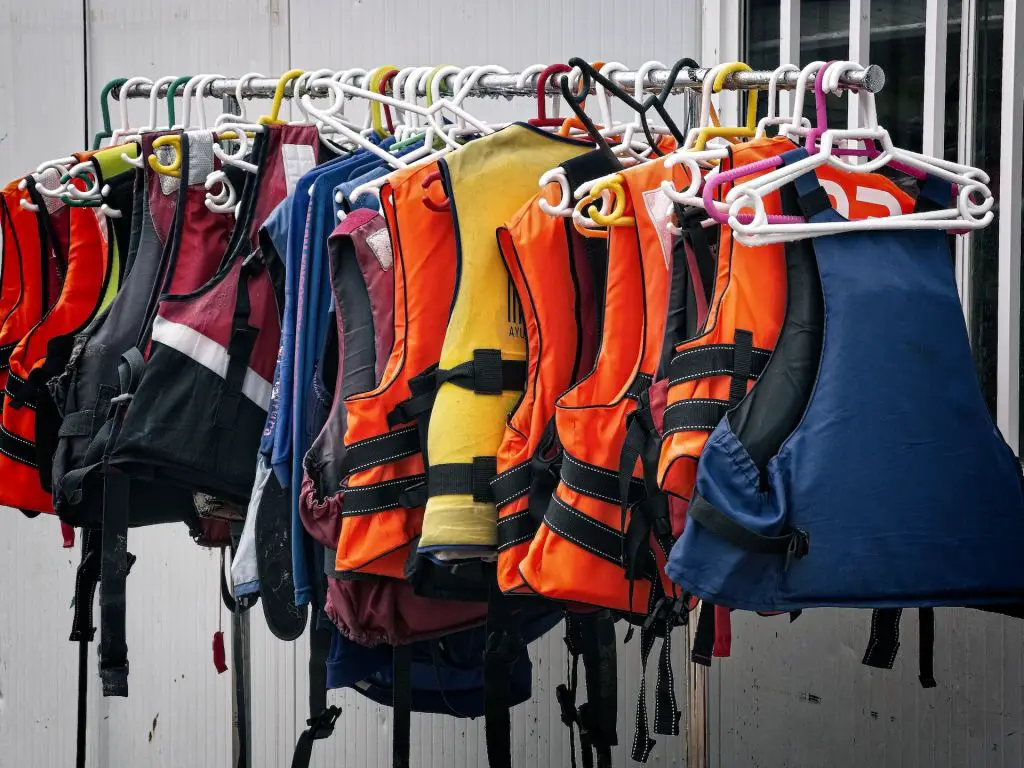
GPS Or Map And Compass
Bring a durable, waterproof GPS or map with a compass to ensure you don’t get lost on the water.
Helmet
Helmets are essential for paddling in rough waters and rivers with a current. Use only ones specifically designed for paddling.
Flashlight Or Lights
Having flares or emergency lights on board can be a lifesaver when visibility is low, especially in rescue situations.
Safety Goggles
Safety goggles are essential for safe paddling in challenging waterways.
Emergency Whistle
A whistle is an excellent tool to help someone find their way out of a difficult situation where they are stuck on the water or on shore.
An Extra Paddle
When paddling on choppy waves, it can be useful to have an additional paddle on hand because kayak paddles can break or lose grip, so it’s crucial to just be prepared.
Towlines
Towlines are essential for paddling in a group or with another person, as they can be attached from one boat to another in case of rescue.
They can be tucked inside a kayak’s bulkhead or fastened to the hull because they are so small.
Float Bags
Float bags are triangular bags that can be inflated and deflated with a tube attached to the side, making it easier to keep the boat afloat if it capsizes.
They also make re-entering the boat easier.
Spray Skirt
A spray skirt is an important safety item when kayaking in rough waters, as it covers the cockpit and prevents water from filling the boat.
A Bilge Pump
A bilge pump is a portable pump that can be used to remove water from a kayak if it takes on water while paddling. It can be used for longer trips.
Having the essential safety equipment is very important, but it is a good idea to check the weather conditions, wind conditions, tide times, and sea conditions to stay safe on the water.
Use the appropriate websites and applications to help you do this.
Clothing And Accessories
Apart from safety equipment, there are other accessories and clothing that are required to make the trip comfortable and safe as well. Let’s start with the obvious.
- Your kayak (obviously)
- A paddle or two
- Waterproof shoes or footwear
- Toilet paper
- Hand sanitiser
- Water-resistant shirt and pants: to keep dry even though you get soaked or splashed on.
- Dry bags: this will keep any valuable items dry while you cruise through the water.
- A water resistant watch
- Lip balm to protect your lips
- A two-way radio to keep in touch with your companions
- A hat for sun-shielding (not to look cool)
- Sunscreen and sunglasses
- Swimming trunks
- Rashguard top (for sun and bug protection)
- Waterproof footwear
- Polarized sport sunglasses
- Moisture-wicking shirts for hot temperatures
- Layers of fleece or waterproof jacket for cold temperatures
- Water bottles to keep hydrated
- Matches, lighter, and fuel (fire paste or gel)
- A tent if you are doing tours or expeditions
- Snacks for day trips
- Cameras and or binoculars for site-seeing not snooping
Techniques And Skills
Here we will discuss the techniques required to go from a beginner to an advanced paddler. However, this is only the knowledge part of it.
Experience and practice are the things that will allow you to develop the necessary skills
Basic Paddling Techniques
The reason to learn paddling techniques from the basics properly is to avoid injuries and reduce fatigue.
When you build good fundamentals, you transfer your energy more efficiently, keep your kayak tracking straight, and turn effortlessly while having fun fishing or exploring on your favorite type of adventure.
Once you have all the equipment, including the best fit for a paddle, you will need basic paddling skills to propel you forward, backward, turn slightly, turn around, and avoid obstacles.
The key to the right paddling technique lies with these four things
Holding a paddle the right way involves four things:
- Know the type of paddle blades you have.
- Keep your blades oriented properly.
- Adjust your grip of the shaft.
- Keep your hands relaxed while holding the paddle shaft.
Watch this video for tips on how to start paddling in the water.
We have four basic strokes. I’ll lay out what they are, when to use them, and how to use them. First, let’s just mention a few tips.
You need to be seated comfortably, but when you start paddling, your body should lean forward slightly.
Depending on the type of kayaking you choose, you will also need to choose between high-angle and low-angle paddling.
High-angle strokes give you more forward motion as they are more aggressive in terms of the angle the paddle hits the water.
Low-angle strokes dig into the water gently and are meant for calm recreational speeds.
Use the muscles in your upper body to get the most out of a kayak paddle, and ensure your feet are firmly planted on the molded-in footwells or adjustable foot pegs in the cockpit.
This will help you keep your balance and engage your core muscles.
Follow the tips in this video for sitting position, from the backrest to the footrest and thigh braces.
Then you will have to master the continuous motion of strokes. This is done through the rotation of your torso by pushing through your legs and then digging into the water with the paddle.
These are the phases of a stroke:
- Wind-up phase. The torso should wind in the direction of the first stroke, and the upper arm should be slightly bent with the wrist at face level.
- Catch phase. Pull the paddle’s blade through the water by the core muscles, not the arm.
- Recovery phase. Unwind or Recovery Phase prepares for the next stroke as you lift the blade out of the water.
The Basic Strokes
Let’s look at the basic strokes.
Forward Stroke
The basic forward stroke is to propel the boat forward by sitting up, engaging your core and back, pulling the paddle forward, pushing against the shaft, slicing the blade out of the water, rotating the body, and dipping the out-of-water blade into the water to repeat the motion on the other side.
Reverse Stroke
The paddle should be brought to the back of the kayak, and the torso should be winded in the same direction.
The paddle should be pulled toward the bow while keeping it parallel to the hull, and when it reaches the feet, slice it out and repeat the stroke on the opposite side.
Sweep Stroke
A sweep stroke is used to turn a kayak around, turning left, right, or in the opposite direction. It involves dropping the blade into the water and sweeping it in a wide arc.
Rotate your torso and keep your arm straight until the blade reaches the stern, then slice it out of the water.
Draw Stroke
A draw stroke allows the boat to move sideways in the water. Rotate the paddle’s blade into a horizontal position and turn your body to where you want to go.
Drop the blade in the water and pull it toward you using the lower hand. Stop before hitting the hull’s side and slice the blade out sideways.
Advanced Paddling Techniques
The bow rudder is an effective tool for changing direction while traveling at high speeds.
It is a simple stationary stroke that allows for smooth and quick turns as well as subtle directional changes.
It increases confidence in making quick decisions to avoid collisions with rocks, other paddlers, and obstacles.
The Bow Rudder
When you need to suddenly change directions while moving forward quickly, a bow rudder allows you to perform a quick but smooth turn to avoid any obstacles like other boats, rocks, etc.
It essentially allows the paddler to avoid what could be nasty collisions.
The Low Brace Turn
This maneuver has roots in Greenland, the origin of the kayak. Also, it is used at speed, usually in rougher sea water, to make a quick sweeping turn before an obstacle.
In calm water, it may not be as useful, but it saves the paddler from having to stop and perform a sweep just to turn in a new or opposite direction.
The Balance Brace
This is another sea kayak maneuver with origins in Greenland-style rolls. It is used as a rough-water survival technique.
Kayak Forward Sweep Stroke
Another sea kayak stroke, the forward sweep, involves the same motion as the sweep stroke, which is done backwards.
However, this turn is not only performed with a forward motion, but the hull of the kayak is tilted to almost tipping to make the turn more efficient.
This stroke allows the paddler to turn without losing all their forward momentum.
Sculling Brace
This stroke allows a paddler to recover from a roll or rebalance in extremely terrible wind and water conditions. Again, this is another sea kayak maneuver.
With these advanced paddling techniques, you want to make sure you have mastered the basics before attempting them.
Also, you want to make sure you practice these in calm water before you go sea kayaking or on an expedition.
Safety And Rescue Skills
By following a few fundamental safety guidelines, it is quite simple to avoid hazardous situations on the water.
- Avoid paddling after drinking. Essentially, alcohol and paddle don’t mix.
- Wear a life jacket. Always wear one. It might seem like it’s extra but it will help you to float even if you are unconscious. Thereby saving you.
- Always dress for weather conditions. It involves submersion in freezing cold water. Falling into cold water can lead to hypothermia, take precautions by either avoiding such conditions or choose to paddle in calm conditions, close to shore with company.
- Paddle at your skill level. Choose locations and conditions that are suitable for your skills. E.g. don’t go touring if you’ve only paddled a few times in a touring kayak. Again don’t paddle alone no matter your skill level.
- Practice a wet exit and entry. Before you run into rough waters practice capsizing deliberately and also re-entering from the water as well. It is important to build survival skills before you need them.
Other rescue skills and precautions
- Pack an emergency kit – make sure to pack a communication device.
- Invest in and use a wetsuit.
- Master basic paddling stoke, rolls and self rescue techniques.
- Communicate your plans to someone who can initiate a rescue if needed.
- Confirm water and weather conditions prior to and on the day. Then make a decision. Follow the area guidelines on making paddling trips.
- Don’t paddle at night or in the dark but prepare for darkness by wearing high-visibility clothing and take waterproof flashlights.
Navigation And Trip Planning
Kayaking trips that explore new locations can be the most fun because they fire up the adventure spirit within.
Planning a kayak trip is important, but it is also important to be cautious and conservative.
Weather is the most dangerous element, as we can never anticipate local weather events to the exact time.
Planning activities is the easiest part, but preparing for unexpected outcomes is the key to planning a successful trip.
Prepare for high winds, mild to extreme precipitation, and sudden current changes.
Expect human-economic activities such as boats, aircraft, trash, logging, and other interventions.
Choose a kayaking group of more than two people with strong swimmers and paddlers.
If you have an inexperienced paddler, you need to tailor your trip to that person’s experience level. Always be conservative when planning activities and estimating capability and timing.
Once you have assembled your group and factored in all possible human and natural interventions that may happen, the next thing is to come up with a float plan.
You build a float plan by researching from all possible sources, local experts, boating shop employees, old maps, new maps, etc.
Your float plan should contain the following;
- Location
- Route
- A checklist
Location
Choose a paddling location that is appropriate for your group’s skill level, and remember to be conservative when planning activities for your group’s weakest paddler.
Re-entering their kayak without assistance is a test of their paddling competency. Make sure to research all the possible natural and human interventions regarding the location.
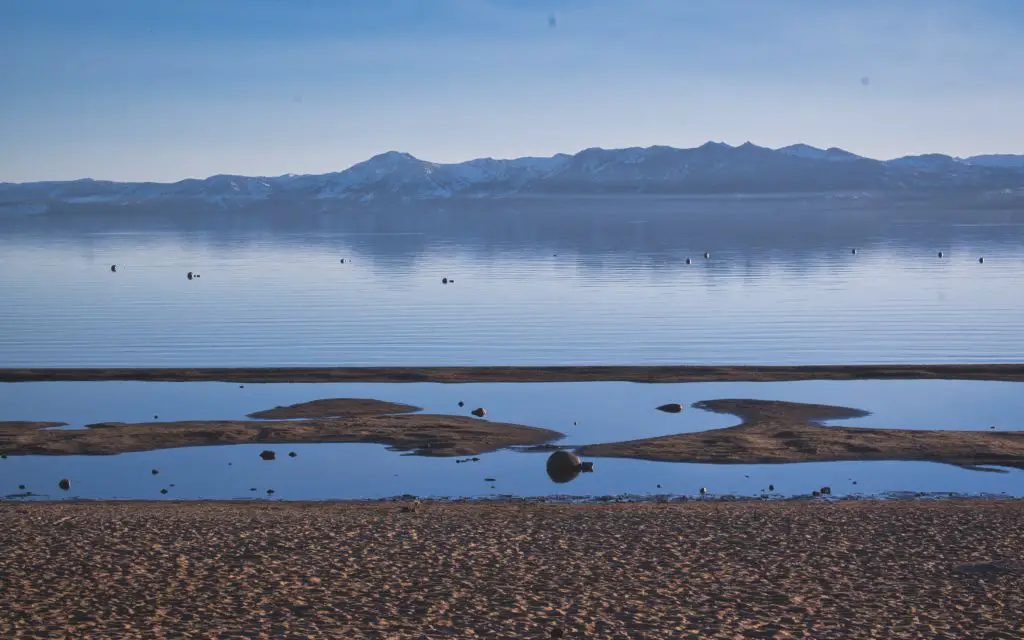
Your Route
When planning a kayak route, consider contingency options such as alternative routes and rest points in case you are not able to reach your destination on time.
These plans will help you make better judgments and save lives if an accident happens. Sticking to the original plan can be dangerous when new factors make the original plan unrealistic.
Emergency Kit
Use a checklist to prepare an emergency kit. These are necessary items that are able to be used in both life-threatening and non-life-threatening emergencies.
An example is staying an extra two days on a five-day trip because weather interrupted a chance to see some must-see locations.
These items can include rain gear, warm clothing from head to toe, a headlamp, food, water, camping gear, etc.
Before you go on your trip, share your float plan with someone who can call for a rescue operation following your plan.
In your float plan, include:
- The members of the group
- The location of the trip
- A detail of scheduled stops and the end date
- The rescue or check in response if you don’t return by the end date
Popular Kayaking Destinations
There are numerous beautiful destinations in the world. We simply can’t name all of the best or most popular kayaking destinations in this article.
However, I can tell you about the wonderful features of a few as a starting point. When you start to go on expeditions, guides and other adventurers will begin to tell you about more magical places.
After all, discovery is part of the fun of adventure.
Let’s look at the prized kayaking destinations by type of location.
- Rivers and streams.
- Lakes and ponds.
- Coastlines and oceans.
- National parks and protected areas.
Rivers And Streams
There are many large rivers all throughout the world, and occasionally they cut through several continents and nations.
The Amazon River is one such river. It flows from Peru through Ecuador, Colombia, Venezuela, and Bolivia before flowing to the Atlantic Ocean in Brazil.
There is plenty of wildlife to see along the Amazon. There is a lush rainforest and vibrant fauna as well. A kayak trip only makes up close an exhilarating experience.
The Patagonia, that is famous for its whitewater, is one of the other rivers of note. The Okavango Delta is an inland delta in Botswana that is absolutely beautiful.
In North America, there are several rivers and streams, but the Colorado River running through the Grand Canyon is breathtaking.
The Mississippi River is another world famous destination as well.
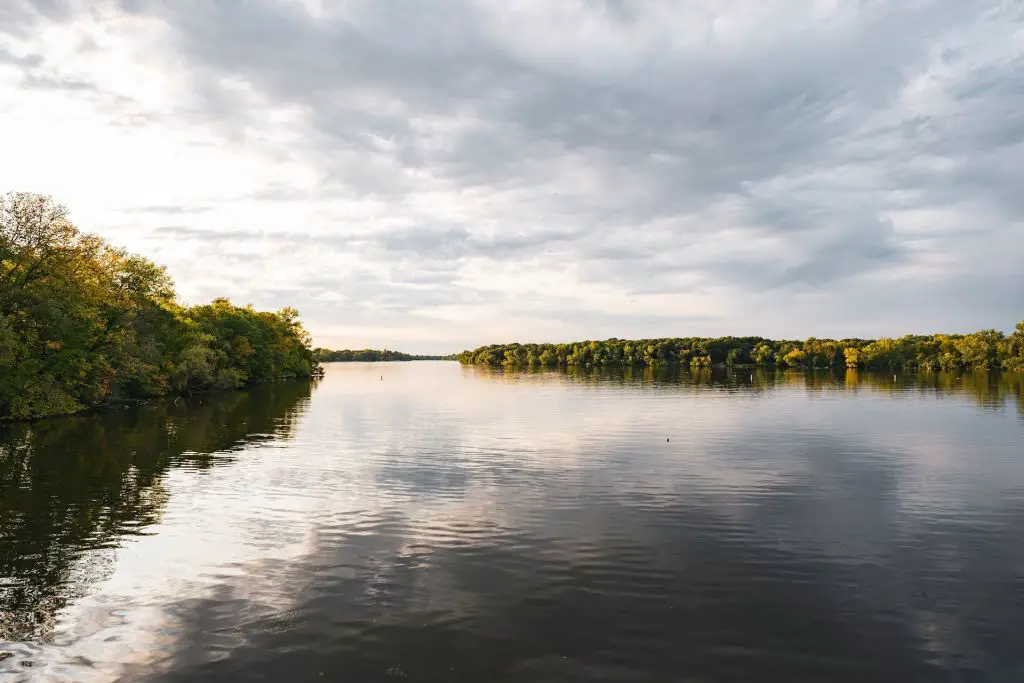
In Europe, popular river kayaking destinations are Croatia’s Zrmanja River, known for its emerald water and deep canyon.
Class II and III rapids are another feature that distinguishes it. Slovenia’s River Soča is renowned for its vibrant blue and green hues.
While the Tara River Canyon in Montenegro is a Unesco World Heritage Site with a stunning gorge.
Lakes And Ponds
There are numerous lakes where you can go paddling. In fact, lakes are some of the best places to begin kayaking because the waters are calm.
So any lake can be highly enjoyable, but there are some that are must-visit destinations for adventurers.
Icelandic kayaking is the ultimate in tranquil activities with glaciers, bays, and fjords.
You can explore the five islands on Lake Garda, Italy’s biggest lake in the Italian Alps.
Considering that Tanzania, Mozambique, and Malawi all share Lake Malawi, it is a well-liked tourist destination in Africa.
The Great Lakes in America and Canada have gained a great reputation among many.
Millions of tourists flock to Thailand’s paddler’s bay at Phang Na for its intriguing mangroves and stalactite-filled sea caves, as well as the long-buried hongs on the islands.
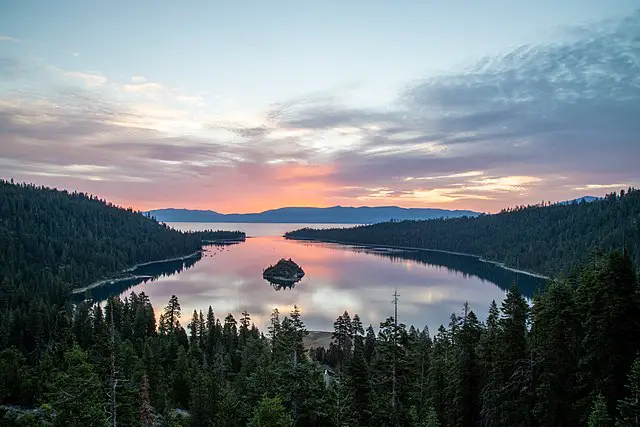
Coastlines And Oceans
For sea kayakers, Croatia’s Dalmatian Coast is a paradise. You can explore the islands and islets that dot the shoreline by the sparkling, clear, warm, turquoise waters.
Croatia is well-known for its monasteries, ruins, and fortresses from the Roman era. It definitely attracts numerous global paddlers.
The Na Pali Coast on the island of Kauai in the Pacific Ocean is another popular destination. Still in the Pacific is the Sea of Cortez, which has islands off the coast of Baja California.
Coastal South America is another great coastal destination but specifically, off the coast of Ecuador, the famous Galápagos Islands are a wonderful destination with some exquisite beaches
Another must-visit location is the archipelago of the San Juan Islands, which is famous for its incredible views of orca whales. It is located in Canada, halfway between Vancouver Island and Washington.
National Parks And Protected Areas
Nowadays, there are many national parks to visit, but Glacier Bay National Park and Preserve should definitely be one of them.
It has access to Alaska’s Coastal Wilderness, making it the closest you can get to the origin of kayaking.
This park is a UNESCO World Heritage Site with jaw-dropping glacial fjords, temperate forests, towering glaciers, and generally breath-taking wilderness.
The Grand Canyon is one of the most popular parks in the world and a breathtaking example of nature.
The town of Banff in the Canadian Rockies is well-known throughout the world for its emerald lakes and soaring peaks.
The two most well-known lakes in the area are Lake Louise and Moraine Lake, both of which attract canoe and kayak paddlers.
Health And Fitness Benefits
Why is kayaking beneficial to paddlers’ health? It’s simple. First of all, it is a sport that engages the total body and the mind as well as being in the middle of nature.
It’s a sport or pastime for all ages, and the activities range from mild to very strenuous. So we will discuss the physical, mental, and social benefits of being a frequent paddler.
Physical Benefits
Kayaking engages the entire body, so you naturally see benefits in the major groups of the body: your upper body, core, hips, and legs.
Your upper body will get a major workout with regular paddling. Paddling in the water and performing a good stroke will work every muscle in the upper body.
In one kilometer, you can perform an average of 300 strokes. Every stroke heavily utilizes the shoulders.
Paddling is great for weight loss as it can burn a lot of calories with non-stop body movements in water. In more challenging water, the resistance is even greater, building muscle as you stroke.
Paddling also promotes core strengthening. Every stroke needs torso rotation, which is motion in your hips, back, and abdominal muscles. The control and balance needed to kayak will strengthen the core.
If you have good form and a good stroke, your legs will assist in driving the power of the stroke through your torso rotation to your arms, digging the paddle into the water.
As such, you can end up with strong, toned legs.
The cardio that you will do in an hour will be tremendous, let alone a whole day trip or whitewater tour. All that cardio will surely improve your heart health.
Mental And Emotional Benefits
Exercise can help improve your mental health. If you’re stressed out, paddling outside might be a relaxing workout and help you feel better.
Sightseeing can also help with stress relief, which is why kayaking is a popular pastime in temperate climates in the Northern Hemisphere.
Summer and fall are great times to observe nature here as the colors of trees and plants change from green to red, orange, and brown.
The sky has many shades of blue from day to night, while the water bodies vary from blue to turquoise and aqua green.
Apart from the sights and the exercise, going on tours and expeditions can ignite your spirit of adventure.
What this does is give you a sense of accomplishing a goal, a kind of competition with yourself, and this can be a boost for your emotional well-being by building your confidence.
Social Benefits
As one of the rules of kayaking adventures is to go in groups, paddling can give you a sense of community. As humans, this is one of our core desires.
It is the third level of Maslow’s hierarchy of needs. Paddlers of all ages and experience levels can meet at clubs or on tours and feel like they belong to a large community of water sports enthusiasts.
Regarding overall health and wellbeing, it is impossible to overstate the comfort that comes from belonging to a group.
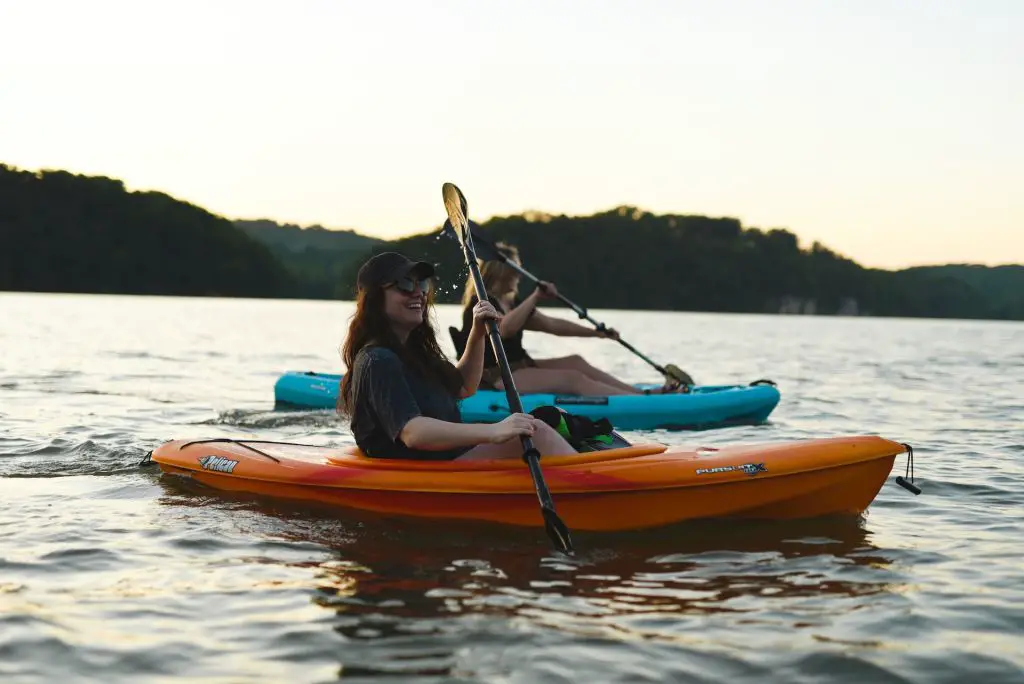
From relaxation to adrenaline-pumping fun, kayaking has the range to provide both, in between, and in one trip too.
People that do water sports tend to be healthy, and with all the activities you can do, it’s no small wonder why.
How To Get Started With Kayaking
Kayaking adventures can be a fun experience. With so much information, we need to know where and how to begin.
Best Times To Go Paddling
First, let’s start with the best times to go paddling. The spring, summer, and fall are when you should go kayaking.
Although winter paddling is possible and people do it, it’s probably best to avoid extreme weather paddling when you are getting to grips with the sport.
Depending on how harsh the winter was, paddling in the spring should be done in the later stages of the season. Additionally, early fall should be the latest you should go paddling.
The reason for this advice is that early spring and late fall can be not only cold but also extremely windy. These conditions can create tricky situations in the water.
As a newbie, you want to avoid these situations.
Next, you will want to choose a location with calm waters to go for your first paddling session. A lake might be the best starting point.
Choose Your Kayak And Gear
Then you want to choose your first gear. Before you buy anything based on blog or Amazon reviews, you should probably rent a starter kit.
A boat, a paddle, even a life jacket. Other personal wearables maybe you should look at investing in a drysuit, some robust foot wear, a helmet (if it’s whitewater paddling), etc.
Practice The Techniques
Now, you will need to know and practice the basic paddle strokes, along with other safety maneuvers like wet exits, rolls, wet re-entry, and so on. If this is daunting for you, I don’t blame you; it actually is. If you are completely new to water sports, you should probably start by taking kayaking classes at a club or with a certified kayaking instructor.
Joining a club might be the best idea, especially if you don’t know anyone who is a regular paddler.
After you complete your courses, you should probably hold off on buying a kayak and a paddle.
I would recommend that you still rent until you know more things, like what type of kayaking you want to do and until you are comfortable in the water.
After you have some experience, you should still not go paddling alone; instead, hire a guide.
The guides are excellent.
They have experience leading trips and are familiar with the region in which you want to go kayaking.
Not only will this be safe for you, but you can focus on improving your paddling, sightseeing, and having fun instead of worrying too much about safety.
Essentially, a guide ensures the trip’s security and your enjoyment while also preparing you for your next adventure.
Summary
Now you know what kayaking is and where it came from. You know the kinds of kayaks best suited for the types of kayaking adventures.
The necessary gear and equipment will depend on the type of kayaking that interests you.
More importantly, you know to gain experience with lakes and rivers before going on expeditions, as they involve other wildlife skills.
Also, how to keep safe by planning your routes and trips as well as the proper gear. You have also learned paddling techniques and other skills required to have fun and be safe.
Now that you know how to get started kayaking and where the “holy grail” of adventures is in your neck of the woods, it all seems accessible.
Cost could be your only obstacle, but the key is to start small. Starting kayaking is probably one of the best things you could do. Adventures can liberate you socially, physically, and mentally.
I hope you are not waiting. At this point, you should be on your way to start classes at a local club. Have fun!
